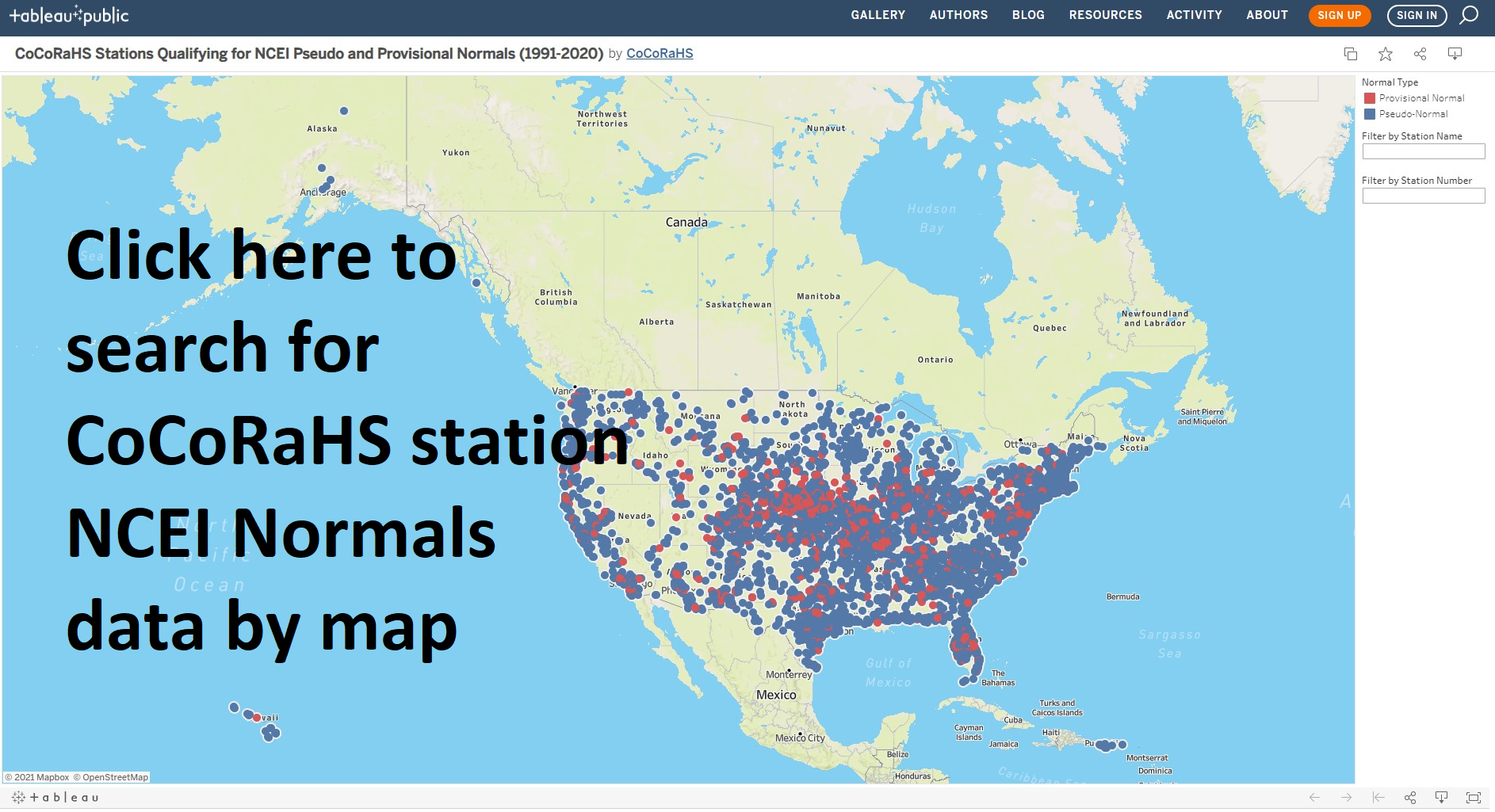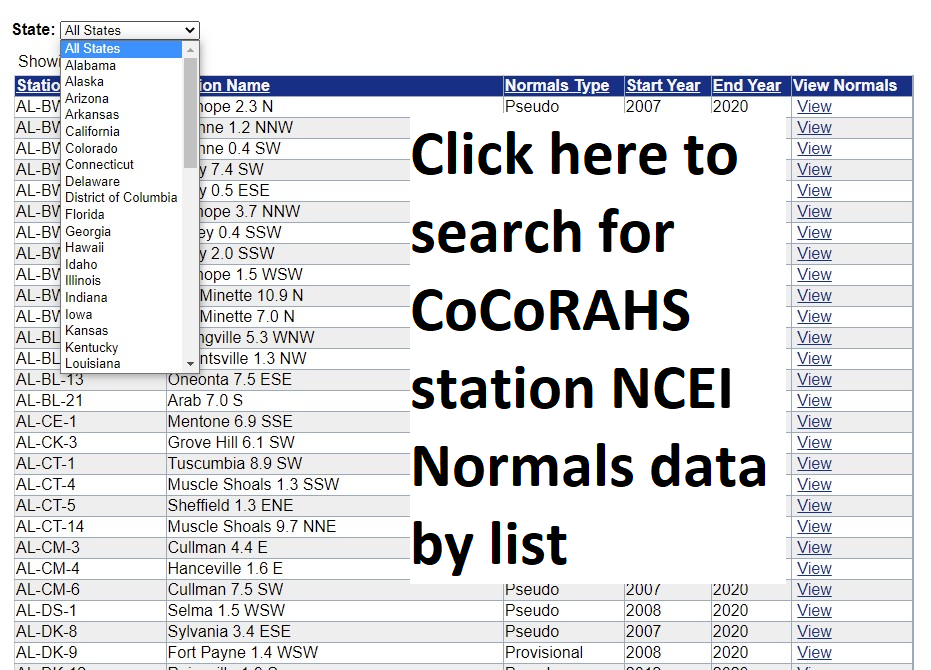|
New Climate Normals Have Been ReleasedEvery 10 years the National Centers for Environmental Information (NCEI) calculates new climate normals for the United States. The 1981-2010 normals have been used for the past 10 years. On May 4, the normals for the period 1991-2020 were released and will serve as the base period with which to compare our current weather until 2031. For the first time ever, CoCoRaHS stations are included in the calculation of normals. The period of record (POR) is long enough for many CoCoRaHS stations so they can be included in the calculations. While no CoCoRaHS station has been operating for 30 years yet (the “Standard” normal), NCEI uses methods to calculate normals based on shorter periods of data. There are two classes of these normals, “Provisional” and “Pseudo-normal”. These are explained below the map.
A total of 5448 CoCoRaHS stations qualified for 1991-2020 climate normals, 4688 for Pseudo-normals and 760 for Provisional normals.  
(additional map instructions here) Definitions “Pseudo-normals” are estimates of monthly precipitation totals and month-to-date and year-to-date totals scaled to match them. A station qualifying for “Pseudo-normal” status must have each calendar month complete with daily observations in at least two years. This means that observers who report regularly but have only been observing for a few years can qualify. NCEI uses multi-day totals spanning up to 5 days for the calculation of monthly totals, as long as they are entirely within the month, and as long as there are no more than 10 days involved in them in any one year/month. “Provisional normal” means that calculations are made of daily and monthly averages, percentiles, and frequencies of occurrence for precipitation and, when sufficiently available, for snowfall and snow depth. A station qualifies for Provisional normal status if each calendar month is complete with daily (not multi-day) observations in at least 10 years. This means zero must be entered on days with no precipitation. NCEI requires daily values for this criterion in order to be able to calculate daily normals. Note that this does not mean you cannot have any multi-day values in your record. If each day in each calendar month has 10 years of data (does not have to be the same ten years), then the station qualifies. If a station, for example, has 13 years of record and several multi-day reports scattered in its record, as long as the dates in the multi-day reports have at least 10 years of daily values in the record, the station qualifies for Provisional status. To demonstrate this further, let’s take an example of an observer who has been reporting every day for ten years takes a vacation from June 10-15 every year and always submits a multi-day report for that period on return from vacation. While all days are accounted for in terms of monthly and longer periods, there are not 10 daily records for June 10 through June 15. Thus, this station would not qualify for Provisional status. However, it would qualify for “Pseudo-normal” status.
|